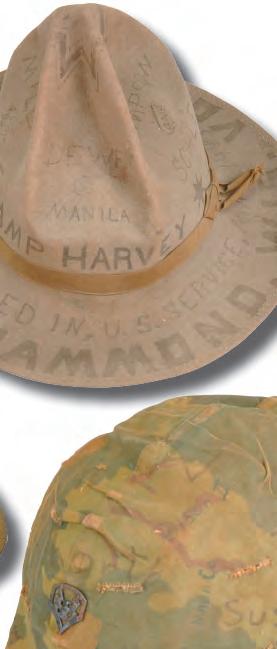
1 minute read
AN IS A STORY


Advertisement

Spending
over a decade working with the museum’s 26,000-piece object collection—time that includes fully inventorying, packing, moving and unpacking every item not on exhibit— has given me a hands-on opportunity to evaluate our collections in their entirety. Since military objects are inherently uniform, any variation—especially manmade changes—tend to draw your attention. When these modifications are then viewed across time, recurring themes and trends become apparent. One particularly enduring custom is the recording of people and places on just about anything a servicemember had at hand, whether issued, purchased, given, found, or taken.









Objects as diverse as a World War I leather wallet belonging to Arthur Boeker with the 6th Sanitary Train, a World War II-era canteen cup carried by Oconomowoc, Wisconsin soldier Harold Duket, a Union Jack from the subchaser USS SC-991 brought home by Herbert Kandziora, or the Korean War-era seabag of Pfc. Robert R. Beilke with the 1st Marine Air Wing, all proved appropriate canvases for recording locales from Athens to Yokohama and everywhere in between. Hand-inked headgear spanning three quarters of a century including a Model 1889 felt campaign hat worn by William Hammond during the Spanish American War, a B-1 summer flying cap worn across North Africa and southern Europe by Sidney D. Tannenbaum during World War II, and a Mitchell pattern reversible camouflage M1 helmet cover carried by Daniel C. Marsden in Vietnam show the more things change, the more things stay the same.




Marking objects in this manner is acknowledging being a witness to history, both big and small. Whether it is fellow members of a unit signing their names








